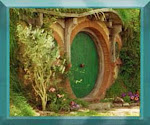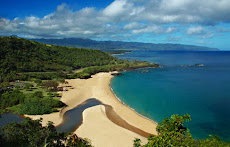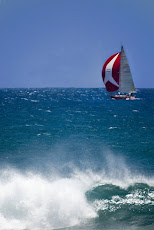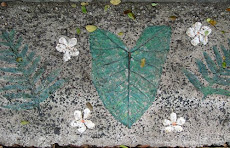Published: Thursday, May 11, 2000
Huge Wildfire Forces Evacuation of Los Alamos, N.M.by Kenneth Chang
Public safety officials ordered everyone out of Los Alamos, N.M., yesterday as intensifying winds sent a week-old fire into the town of 11,000. But officials at the Los Alamos National Laboratory said they were confident that the nuclear material and chemical explosives were protected, even if the laboratory itself started burning.
Police, sheriff's and fire department officials went door-to-door urging people to pack up and get out as quickly as possible. No injuries were reported, but about 200 homes were near the fire or already burning early this evening, and more were destroyed as the flames advanced through the evening. The fire command post itself was forced to leave.
President Clinton declared Los Alamos a disaster area.
A plume of smoke 17,000 to 20,000 feet high was covering northern New Mexico and moving east into Texas.
''It'll be in Houston by tomorrow,'' said Jim Paxon, a fire spokesman with the United States Forest Service.
''The fire blew up, basically,'' Mr. Paxon said. ''It's not safe and there are constant winds, so all air operations have been grounded and all hand crews have pulled back into safe zones.''
Crews could not fight the blaze at the line of fire, he said, but would continue to work on its periphery.
Brush fires reached some of the laboratory's far-flung property yesterday, setting ablaze a structure at the Weapons Engineering Tritium Facility, but the flames were quickly put out, officials said.
A power failure caused by fires in the northwest suburbs knocked out pumps supplying some of the firefighters with water. Emergency generators were being rushed in.
''The whole town is burning,'' Pauline Stone, 73, who has lived in Los Alamos since 1949, said at a Red Cross shelter in White Rock. ''It's all going to disappear.''
Wind gusts up to 41 miles an hour pushed the fire to the east and southeast, toward town. The wind died down to 20 to 25 m.p.h. overnight but is expected to kick up to 50 m.p.h. today.
The fire, called the Cerro Grande fire after the mountain where it started, was set a week ago by the National Park Service in the northwest corner of Bandelier National Monument to clear brush but flared out of control over the weekend.
Fire is always a worry in the dry pine forests that surround the town of Los Alamos and Los Alamos National Laboratory, whose thousands of buildings -- most modern, but a few wooden structures that date to the Manhattan Project of the 1940's -- occupy 43 square miles of canyons and mesas. In 1977, the La Mesa fire burned part of the laboratory grounds, and a 1996 fire, accidentally ignited by campers, devastated some 15,000 acres of nearby forest.
A main area of public concern was Technical Area 55, where the laboratory keeps most of its nuclear materials. The surrounding area was virtually free of trees and other burnable fuel, Mr. Danneskiold said, and was about five or six miles from the nearest firefighting line, and even farther from any blaze.
''It's also a building built to nuclear standards, virtually bombproof,'' he said. ''It supposedly can survive earthquakes, huge fires, airplane crashes and disasters in general.''
He said there have been no intact nuclear weapons at the laboratory for 15 years. Non-nuclear explosives are stored in concrete bunkers buried under a couple feet of earth.
''We're pretty confident in those bunkers,'' Mr. Danneskiold said. ''The La Mesa fire burned over the same bunkers, and nothing happened.''
But the outlook was critical for the town itself, where residents continued to stream out last night. The western end of town, initially evacuated on Sunday, included 500 homes. A northern section that was evacuated yesterday moments before the blowup also contained 500 homes, firefighters said.
In Santa Fe, hotels where rooms often cost $300 a night, were offering evacuees rooms for $25.
Members of Concerned Citizens for Nuclear Safety, an environmental group in Santa Fe, worried that toxic and radioactive fumes could be released into the air if the fire spread to drums of waste at the laboratory.
''We are concerned the lab is not fully knowledgeable of what is in each drum,'' said Suzanne Westerly, the group's acting executive director.
Ms. Westerly also said that over the years plants around the laboratory had absorbed radioactive contaminants that were now being released into the air as the plants burned.
But Mr. Danneskiold said that the laboratory continually monitored the air around it and that ''there was no evidence of airborne contamination'' after the last major fire, in 1996.
The laboratory's radioactive-contaminated waste is stored on a barren area eight to nine miles from the fire, he said, adding, ''There's no vegetation in the area to burn.''
Mr. Danneskiold said that while the laboratory had been closed since Monday because of the fire, power was on and guards and emergency personnel remained on duty. Security in top-secret areas was being maintained, he said.
Photo: After fires forced evacuation of Los Alamos, N.M., yesterday, Officer Rigo Chavarria directed motorists in the town of 11,000 residents. (Jake Schoellkopf/Associated Press) Map of Los Alamos shows the location of the mandatory evacuation: The Cerro Grande fire began in Bandelier National Monument.
~~~~~~~~~~~~~~~~~~~~~~~~~~~~~~~~~~~~~~~~~~~~~~~~~~~~
Associated Press Online / 05/26/2000
Monitoring of Los Alamos Lab Sought
LOS ALAMOS, N.M., May 26, 2000 (AP Online via COMTEX) -- Environmentalists are demanding an independent analysis and regular monitoring of radiation levels on the fire-ravaged land around Los Alamos National Laboratory.
A federal air-monitoring team last week reported elevated background radiation levels, which it said would be normal when vegetation burns. But the levels, in some cases 2 to 10 times higher than normal, triggered concern among some New Mexico residents.
"We're calling for an independent citizens review board to assess the monitoring data and risks, and we want a long-term health study of people exposed to the smoke," Suzanne Westerly, director of Concerned Citizens for Nuclear Safety in Santa Fe, said Thursday.
Russian nuclear and atmospheric scientist Sergei Pashchenko, a consultant to a non-governmental group which works to ban weapons containing depleted uranium, said he analyzed the limited data available on the lab's Internet site and determined it could not be discounted as naturally occurring effects of the fires. Lab spokesman Kevin Roark had no comment on the claims but said he wasn't surprised.
"Every time we put out data, the activist groups dispute it," he said.
The wildfires burned more than 48,000 acres and destroyed more than 200 homes near the labs in northern New Mexico. Los Alamos National Laboratory: www.lanl.gov/worldview































